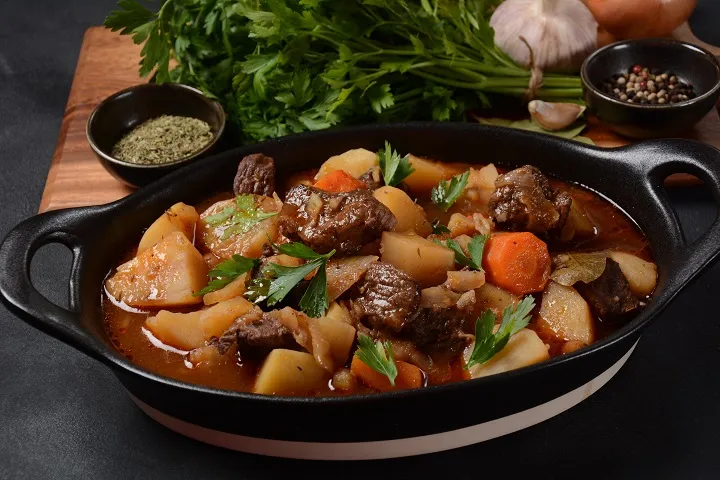Explore the intersection of tradition and innovation as you savor the flavors of classic Irish dishes with a contemporary twist. From reinvented shepherd’s pie to creative takes on soda bread, the evolution of Irish comfort food offers a tantalizing glimpse into the culinary landscape. Discover how chefs are pushing boundaries while still paying homage to the essence of Irish cuisine, inviting you on a journey that promises to surprise and delight your taste buds.
Traditional Irish Dishes With a Twist
 Exploring traditional Irish dishes with a modern twist reveals a culinary journey that combines heritage with innovation, offering a fresh perspective on beloved classics. Take, for example, the traditional Irish stew. While the original recipe consists of lamb or beef, potatoes, carrots, and onions, a modern twist might include the addition of Guinness beer for a rich depth of flavor. This infusion adds a unique touch while still honoring the dish’s roots. Another traditional favorite, colcannon, can be reinvented by incorporating kale or other leafy greens for added nutrition and a contemporary twist. By updating these classic recipes, you can experience the essence of Irish cuisine while embracing new flavors and techniques.
Exploring traditional Irish dishes with a modern twist reveals a culinary journey that combines heritage with innovation, offering a fresh perspective on beloved classics. Take, for example, the traditional Irish stew. While the original recipe consists of lamb or beef, potatoes, carrots, and onions, a modern twist might include the addition of Guinness beer for a rich depth of flavor. This infusion adds a unique touch while still honoring the dish’s roots. Another traditional favorite, colcannon, can be reinvented by incorporating kale or other leafy greens for added nutrition and a contemporary twist. By updating these classic recipes, you can experience the essence of Irish cuisine while embracing new flavors and techniques.
Fusion Flavors in Irish Cuisine
Embracing a fusion of flavors in Irish cuisine offers a dynamic culinary experience that intertwines traditional Irish ingredients with global influences, creating innovative and exciting dishes. By blending Irish culinary traditions with flavors from around the world, chefs are pushing boundaries and redefining Irish cuisine. For example, you may come across dishes like Guinness-infused ramen, where the rich flavors of the stout complement the savory broth perfectly. Another popular fusion dish is Irish sushi, where traditional Irish ingredients like smoked salmon or boxty are incorporated into sushi rolls for a unique twist. These innovative combinations bring new life to classic Irish dishes, appealing to a diverse range of palates and showcasing the versatility of Irish cuisine.
Innovative Ingredients for Classic Recipes
To elevate classic Irish dishes and introduce a modern twist, incorporating innovative ingredients can add depth and complexity to traditional recipes. Consider using ingredients like smoked sea salt to enhance the flavor of colcannon or adding truffle oil to elevate a simple potato soup. Quinoa can be a nutritious substitute for oats in a traditional Irish porridge, while seaweed flakes can bring a unique umami taste to a hearty Irish stew. Experimenting with ingredients such as harissa paste in shepherd’s pie or miso in a beef and Guinness stew can create bold and unexpected flavor profiles. By incorporating these innovative ingredients thoughtfully, you can breathe new life into classic Irish recipes while staying true to their comforting essence.
Modern Cooking Techniques in Irish Cooking
Incorporating sous vide cooking and molecular gastronomy techniques can bring a contemporary flair to traditional Irish dishes, enhancing both the flavors and textures of the meals. Sous vide cooking involves vacuum-sealing ingredients and cooking them in a water bath at precise temperatures, resulting in tender meats like corned beef or lamb stew. Molecular gastronomy techniques, such as spherification or foams, can add playful elements to dishes like Irish stews or colcannon. By utilizing these modern cooking methods, you can elevate classic Irish recipes by introducing new depths of flavor and innovative presentations. Experimenting with these techniques allows for a fusion of tradition and innovation, creating a unique dining experience that honors the roots of Irish cuisine while embracing culinary evolution.

 Power of attorney
Power of attorney
